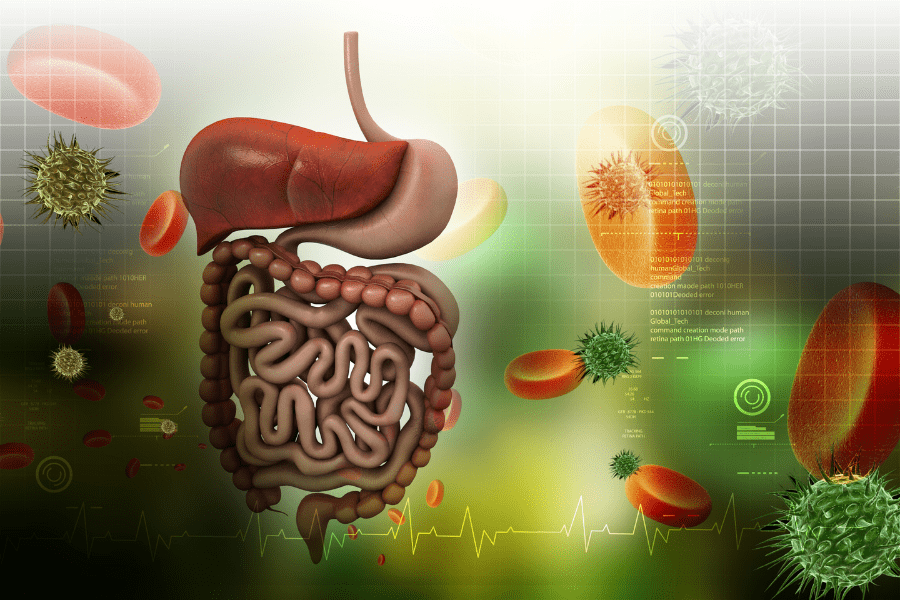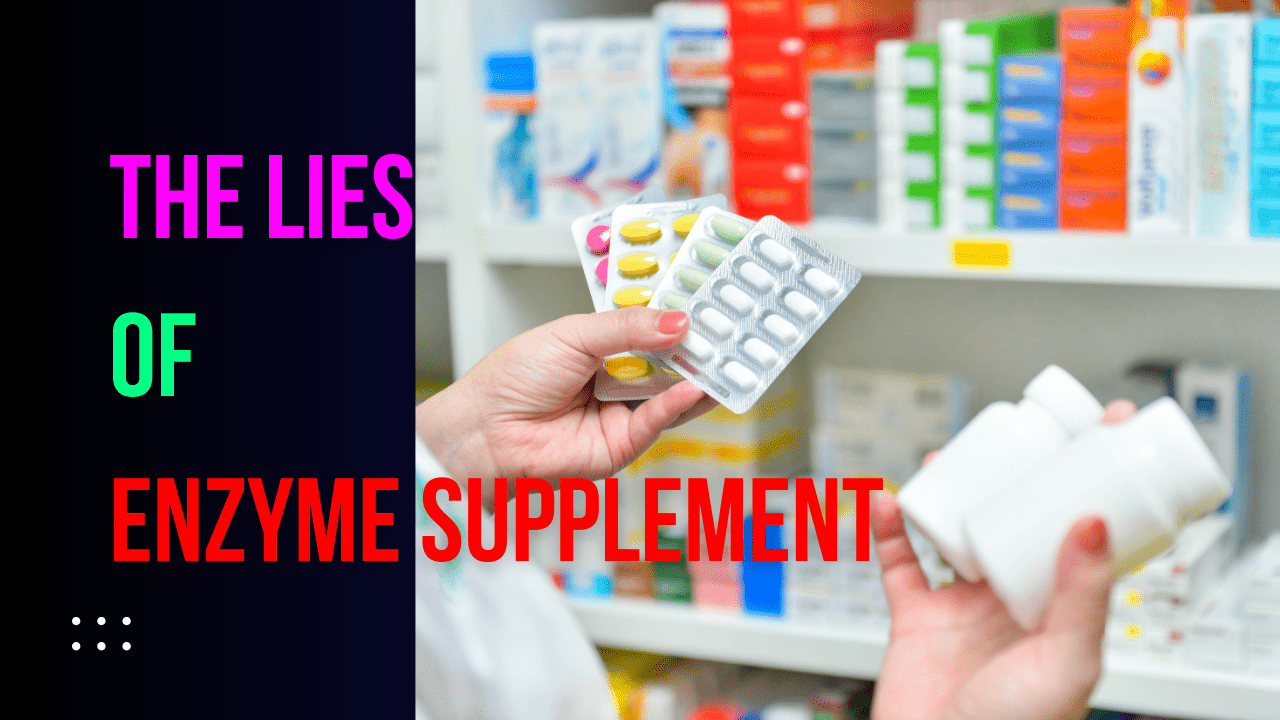Table of Contents
Introduction

It’s hard to say no to simple answers to hard health problems in the big, often confusing world of eating and health. Eating enzyme-rich foods is one option that has caught people’s attention because it is said to have many health benefits, such as better digestion and better absorption of nutrients. But when you look more closely at the science ideas behind stomach and metabolism, you see that things are not so simple. This piece tries to clear up some common misunderstandings about enzyme foods by looking at their role in the diet from a science point of view. We want to help people understand how to best support body health through nutrition by busting common myths and stressing the value of vital amino acids and a protein-rich diet. When trying to find your way through the confusing world of health claims and food advice, it’s important to tell the difference between stories that are driven by marketing and practices that are based on evidence. This piece tries to help readers through this process by encouraging them to make dietary choices based on science facts.
Understanding Enzymes and Digestion

The Nature of Enzymes
Enzymes are interesting biological molecules that play a key role in the complex dance of life’s processes. Because they are special proteins, they speed up almost all biochemical processes that happen in living things, including people. Their main job is to speed up chemical processes, which is very important for keeping life going. Without enzymes, these processes would happen too slowly to support all the things that are needed for life, like breaking down food and copying DNA.
One of the most interesting things about enzymes is how specific they are. Each enzyme is designed to speed up a certain reaction or set of reactions. This keeps the body’s complicated biological processes running smoothly. This is because each enzyme molecule has a unique three-dimensional structure that creates a unique active site. The molecules that enzymes work on fit into these active sites like keys into locks. This lets the enzyme speed up a certain reaction while leaving other reactions alone.
The processes that enzymes speed up don’t destroy them or change them forever, so they can work again and again. This efficiency is very important for biological systems because it means that a small amount of enzyme can have a big effect on how cells work.
Different things, like temperature, pH, and the presence of inhibitors or activators, can change how enzymes work. These factors are tightly controlled in the human body to make sure that enzyme function is at its best for physiological circumstances.
To understand how enzymes affect health and diet, you must first understand what enzymes are. Even though enzymes are necessary for life, the idea that eating foods high in enzymes can directly improve the body’s enzyme processes is not true. This is because scientists don’t fully understand how enzymes act when they are not in their natural organic settings, especially when they are being used in digestion. As we learn more about what enzymes do inside the body versus what happens to them when they are eaten, it becomes clear that the health benefits of eating foods high in enzymes need to be looked at in a more scientific way.
The Digestive Process
The digestive process is long and complicated. It starts when food is eaten and doesn’t end until the body absorbs or gets rid of the waste. The body needs this trip to break down food into its basic chemicals, which it can then use for energy, growth, and cell repair. To bust myths about eating enzyme-rich foods and their claimed health benefits, it’s important to learn more about this process.
The trip starts with the mouth and stomach.
The teeth and saliva break down food mechanically and chemically in the mouth, which is where digestion happens. Acids in the saliva, like amylase, break down carbs, changing starches into simpler sugars. On the other hand, enzymes do most of their work later on in the stomach and small intestine.
After being eaten, food moves down the throat and into the stomach, which is very acidic and where proteins start to break down. Gastric juice is made by the stomach and has hydrochloric acid and the enzyme pepsin in it. Pepsin starts cutting peptide links when hydrochloric acid opens up proteins, revealing their peptide chains. This breaks the proteins into smaller peptide chains. This acidity climate also turns off any enzymes that are eaten, leaving only proteins to be broken down.
It is the small intestine that does most of the digestion and absorption.
After being partly broken down in the stomach, food goes to the small intestine, where most of the digestion and absorption of nutrients happen. Here, bicarbonate from the pancreas balances out the acidic chyme, which is a mix of partly digested food and stomach juices. This makes it a good place for pancreatic enzymes to work.
Enzymes like trypsin and chymotrypsin are released into the small intestine by the pancreas. These enzymes are very important for digestion. These enzymes keep breaking down long chains of peptides into shorter chains of peptides and amino acids. Lipases also break down fats, and amylases break down carbs even more.
Also, enzymes like lactase and maltase are released by the small intestine. These finish breaking down carbs into simple sugars. Peptidases are enzymes that are found on the cells of the small intestine. They break down proteins by turning peptides into amino acids.
Getting into the body
Absorption is the last step in digestion. The small gut wall is made up of millions of tiny extensions that look like fingers. These are called villi, and they make a lot more surface area available for absorption. Nutrients like amino acids, simple sugars, fatty acids, and glycerol enter the bloodstream through the villi. They are then sent to cells all over the body to be used as energy, for repair, or as building blocks for new cells and tissues.
Debunking enzyme supplement Myths

Misconceptions about Enzyme Benefits
A lot of people are excited about enzyme-rich foods and vitamins because they think they are good for your health. A lot of the time, these claims say that eating enzymes or taking enzyme supplements can improve gut health, speed up the metabolism, and even stop or treat different illnesses. But these claims aren’t very strong when you look at them through the lens of what scientists know about enzymes and how digestion works.
Enzymes don’t make it through digestion.
One common misunderstanding is that enzymes that are eaten keep working properly once they get to the digestive system and can help the body’s own enzymes. This theory doesn’t take into account the basic science of digestion. The acid in the stomach and digestive enzymes made by the pancreas denature enzymes and break them down into their amino acid parts. The idea that dietary enzymes can avoid this and have positive benefits on the body is fundamentally wrong.
Not Understanding How Enzymes Work
Another mistake comes from not understanding how enzymes work in the body. Enzymes are very specific catalysts that only work in very specific conditions, like pH levels and temperatures that are carefully controlled inside the cells and parts of the body. The idea that enzymes eaten can directly change biological processes doesn’t take into account how complicated it is to control enzymes or the fact that enzymes eaten probably won’t be active or useful after being digested.
Thinking You Don’t Need Dietary Enzymes Enough
People also think they don’t need as many food enzymes as they do. All of the enzymes that are needed for nutrition and metabolism are made by the body itself. Some medical conditions, like chronic pancreatitis or cystic fibrosis, can make enzymes or secretions less active. However, these are serious health problems that need medical help. For most people, their bodies make enough stomach enzymes on their own, so they don’t need to take extra enzymes.
What Draws People to Quick Fixes
Enzyme products are often marketed to people who want quick health fixes by saying that taking enzyme supplements can easily make up for bad eating habits or bad living choices. This not only gives the wrong idea about enzymes’ place in health, but it also takes away from how important it is to eat well and live a healthy life. Changing your whole food and way of life, not just one nutrient or substance, is usually what gives you real health benefits.
The Truth About Dietary Enzymes
A lot of the time, when people talk about food enzymes, they’re talking about myths and marketing tricks instead of science facts. It’s important to know the truth about food enzymes and their role (or lack of role) in human health in order to avoid the myths.
Food enzymes are not the start of digestion, but rather the end.
There is one basic truth about food enzymes: they are proteins that are digested in the same way as other proteins in the diet. When these enzymes are eaten, the acidic environment of the gut breaks down their structure. After that, digestive enzymes in the stomach and small intestine break them down into smaller pieces called peptides and amino acids. This process works well, and by the time the enzymes are taken, they can’t go back to doing what they were made to do.
How Well Enzymes Are Made by the Body
Amazingly, our bodies make all the enzymes they need for digestion and metabolism on their own. The pancreas, liver, stomach, and small intestine all make different kinds of enzymes that the body needs. These enzymes speed up the breakdown of fats, proteins, and carbs, which makes it easier for the body to absorb and use nutrients. This self-sufficiency shows how pointless it is to take enzymes from outside sources in the hopes that they will improve the body’s own enzyme processes.
Enzymes as Food, Not as Catalysts
When enzymes are eaten, they are more useful as a source of amino acids, which are the building blocks of proteins, than as active catalysts. The body can use these amino acids to help with many things, such as making new proteins and enzymes when it needs to. So, foods that are high in enzymes can help you eat a healthy diet, but their value comes from the nutrients they contain, not the enzymes themselves.
What Happens When You Cook and Process Food
Most foods are cooked or processed in some way before they are eaten, which makes any enzymes they may contain even less active. Heat breaks down enzymes, which stops them from working. However, this fact makes the case for eating raw, enzyme-rich foods for health reasons even weaker, since the enzymes would not survive cooking intact.
A Reasonable Look at Food and Health
Focusing on dietary enzymes takes attention away from more important nutritional factors, like the balance of macronutrients, vitamin intake, and the variety of foods eaten. You don’t need to take special enzyme supplements to stay healthy if you eat a balanced diet full of fruits, veggies, whole grains, lean meats, and healthy fats.
Conclusion
In conclusion, the story about foods and nutrients that are high in enzymes needs to be approached with care, based on science and nutritional knowledge. This piece tried to clear up some common misunderstandings about the role of enzymes in the diet by pointing out the important difference between enzymes that come from food and enzymes that the body makes itself. It’s clear that enzymes are necessary for biological processes, but the benefits said to come from eating foods high in enzymes don’t make sense when you look at how digestion works.
The truth about dietary enzymes and the focus on essential versus non-essential amino acids shows a bigger idea in nutrition: making smart food choices is very important. Nutrition is a complicated subject, and people who understand the science behind food can make decisions that are better for their health. Focusing on a healthy diet full of different nutrients is the best way to support general health, instead of looking for quick fixes in the form of supplements or trendy diets.
There are ten different kinds of amino acids that our bodies need. These ten amino acids are called important amino acids. There are more, but these ten can be used to make the others. Some of these amino acids might be missing from our diet if we only eat plants. Non-vegetarians, on the other hand, can get these nutrients from eating eggs, milk, anchovies, stewed fish, pork, beef, and other similar foods every day. You don’t need to take enzyme pills. If I had to choose, I would rather eat a healthy diet full of protein and amino acid-rich foods like doenjang (soy sauce), cheese, probiotic yogurt, tofu, eggs, and soybean paste (doenjang).
Discover More
If this article made you happy and taught you something, I’m sure our next article will do the same for you. Each piece is carefully written to help you understand things better and enjoy reading more. So, to keep exploring and having fun, just click on this link to go to our next story.
Types and differences of NAND Flash Memory. Part 2 – ReViewMaster DEN (rvmden.com)
Types and differences of NAND Flash Memory. Part 1 – ReViewMaster DEN (rvmden.com)



